
When (and How) to Divide Hostas for a Healthier, Fuller Garden
Published: 29/05/2025 | Updated: 29/05/2025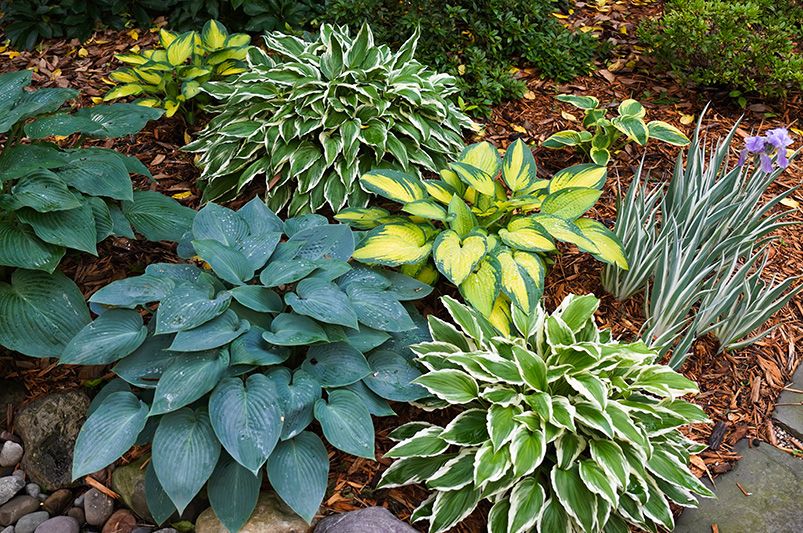
Hostas are the quiet champions of shady gardens—lush, low-maintenance, and available in a wide range of colors, sizes, and textures. But even the most resilient hostas can start to look a little tired over time. If your once-vibrant clumps have grown crowded or started to thin in the middle, it might be time for a refresh.


Dividing hostas is a simple, satisfying way to reinvigorate your garden. It encourages healthier growth, helps prevent disease, and gives you more plants to spread around your landscape—or share with fellow plant lovers.
Not sure when or how to divide your hostas? You’re in the right place. In this guide, we’ll break down the best time to divide, the tools you’ll need, and how to replant with confidence.
Looking for more seasonal garden tips like this one? Don’t miss ShrubHub’s weekly blog articles packed with expert advice, plant spotlights, and exclusive landscaping deals—all tailored to help you grow the outdoor space of your dreams.
When’s the Best Time to Divide Hostas?
Timing is everything when it comes to giving your hostas a successful split. Divide too early or too late, and you could stress the plant and stunt future growth. Fortunately, hostas are forgiving perennials—and when done right, dividing them is easier than it sounds.
Early Spring: The Ideal Moment
The absolute best time to divide hostas is in early spring, right when the "eyes" or pointed buds begin to poke out of the soil, but before the leaves fully unfurl. At this stage, the root system is waking up and easier to handle, with minimal disruption to foliage.
Early Fall: A Close Second
Can’t get to it in spring? Early fall is also a solid window—think cool evenings and soil that’s still warm enough to encourage root establishment. Just avoid waiting too close to your region’s first frost, or the roots may not settle before dormancy kicks in.
Why Mid-Summer is a No-Go
Mid-summer may be prime for BBQs, but it’s tough on hostas. Dividing during peak heat and growth puts stress on the plant and limits root recovery. Unless it’s an emergency divide, let your hostas chill until temps ease up.
Climate Counts: Zone-Smart Timing
Your USDA hardiness zone plays a role too. In cooler regions (Zones 3–6), aim for early spring or late summer. Warmer zones (7–9) can get away with later spring or early fall divides, thanks to longer growing seasons. Not sure about your zone? ShrubHub’s designers can help you customize planting timelines based on your location.

How to Know It’s Time to Divide
Hostas will tell you when they’re ready—if you know what to look for.
-
Overcrowded clumps: If your hostas are bursting at the seams or competing for space, it’s time to divide and conquer.
-
Bald spots or dead centers: An empty crown surrounded by leaves means the middle has likely exhausted its resources.
-
Shrinking size: Fewer leaves or smaller-than-usual growth can signal root congestion or declining vigor.
-
You want more hostas: Want to spread the shade-loving love across your garden? Dividing lets you multiply your favorite varieties for free.
Step-by-Step: How to Divide Hostas Like a Pro
Dividing hostas isn’t just for seasoned gardeners—anyone with a shovel and a bit of patience can get the job done. Here’s how to split your plants like a pro and help them thrive in their new spots.
What You’ll Need:
-
A sharp spade or garden fork
-
Clean, sharp knife or pruning saw (for tough clumps)
-
Gardening gloves
-
Mulch or compost
-
Watering can or hose
1. Dig Up the Whole Clump
Using a spade, dig in a wide circle around the hosta—at least 6 inches beyond the crown—to avoid slicing into roots. Gently lift the clump from the soil and shake off excess dirt so you can see the root structure clearly.
Tip: If the ground is dry, water the area well the day before. It’ll make digging easier.
2. Divide with Confidence
Look for natural divisions—those are the spots where you’ll want to slice. Aim for 3–5 eyes (buds) per division to ensure each new plant is strong enough to thrive.
-
For younger or looser clumps: Gently pull the roots apart with your hands.
-
For older or dense clumps: Use a clean knife or saw to slice cleanly through the root mass.
Don’t worry if some roots break—hostas are tough and bounce back quickly.
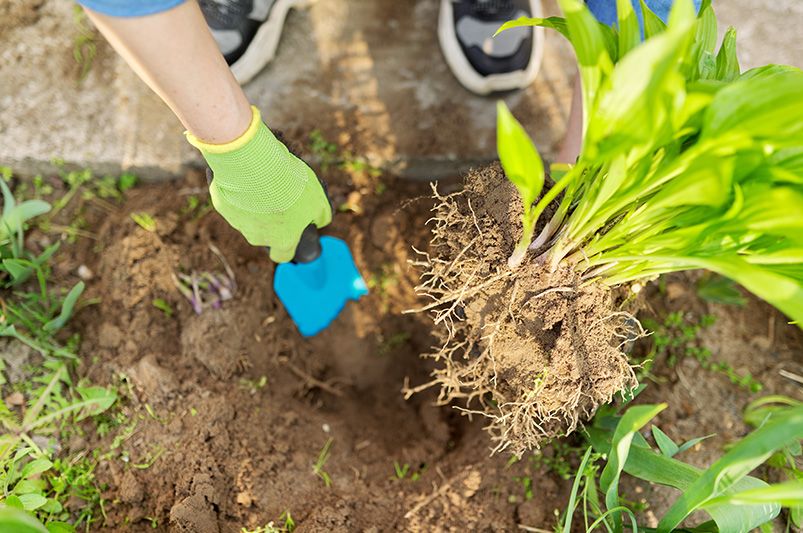
3. Replant the Divisions
Choose a shady or partially shaded spot with well-drained soil. Dig holes just deep enough to accommodate the roots, making sure the crown (where the leaves meet the roots) sits at ground level.
Space divisions 18–30 inches apart, depending on the mature size of the variety.
4. Water + Mulch = Happy Hostas
Water deeply after planting to help roots settle. Keep the soil consistently moist (but not soggy) for the first few weeks.
Apply a thin layer of mulch to retain moisture and suppress weeds—just keep it away from the base of the plant to prevent rot.
Bonus: Use ShrubHub’s organic flower booster pods to give your hostas a jumpstart without guesswork.
Stunning ShrubHub Hostas to Add to Your Divided Beds
Once you’ve split and spaced your hostas, why not refresh your beds with a few standout additions? ShrubHub offers a curated collection of unique, eye-catching varieties that thrive in shade and add texture, color, and charm to any garden design.
Here are a few favorites worth planting:
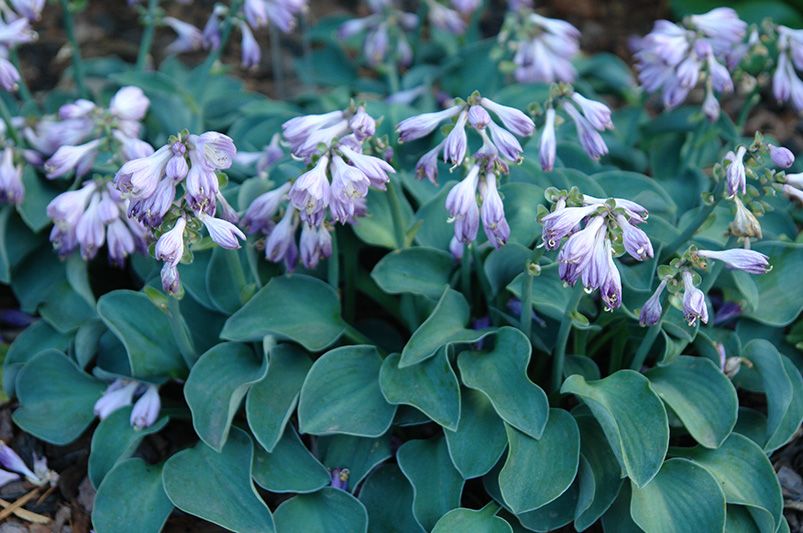
Blue Mouse Ears Hosta
The Blue Mouse Ears Hosta is a charming miniature variety beloved for its compact size and adorable rounded leaves. Its thick, blue-green foliage forms tight, symmetrical mounds that resemble tiny mouse ears—hence the name. Ideal for borders, containers, or small shaded garden spaces, this low-maintenance perennial adds a delightful pop of texture and color. In summer, it produces short stalks of lavender bell-shaped flowers that attract pollinators. With its unique look and easy-care nature, the Blue Mouse Ears Hosta is a standout choice for any shade garden.
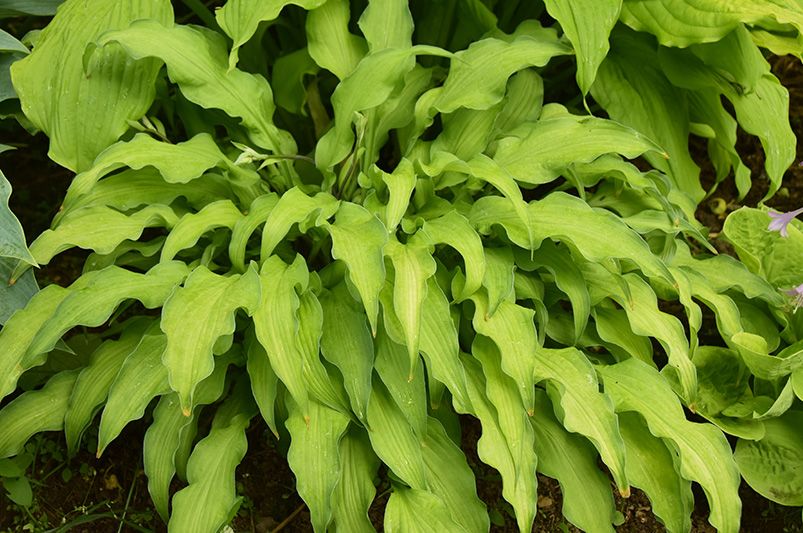
Curly Fries Hosta
The Curly Fries Hosta is a standout variety known for its fun, unique foliage and striking texture. This compact hosta features long, narrow, chartreuse leaves with heavily rippled edges that give it a curly, whimsical appearance. Perfect for adding a splash of bright color to shady areas, its vibrant foliage glows in the garden and pairs beautifully with broader-leaved hostas for contrast. In midsummer, slender spikes of lavender flowers rise above the foliage, attracting hummingbirds and pollinators. Ideal for borders, containers, or shade gardens, the Curly Fries Hosta brings playful elegance and bold personality to any landscape.
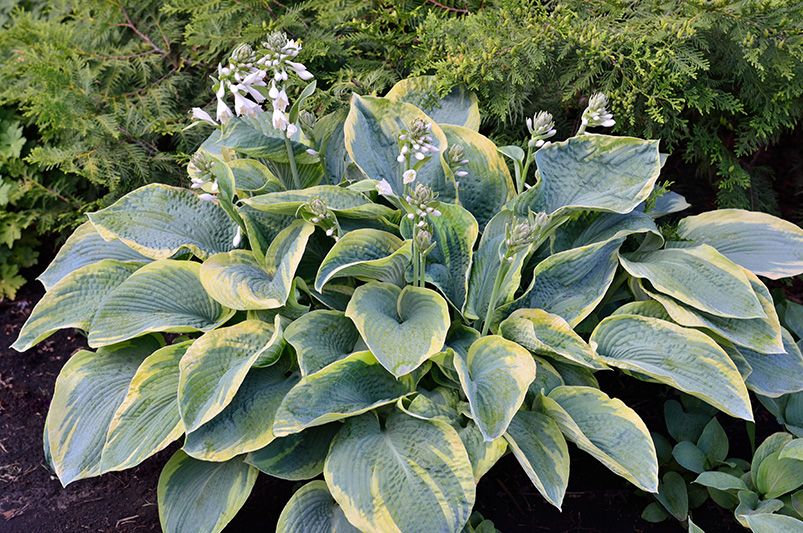
Frances Williams Hosta
The Frances Williams Hosta is a classic favorite, admired for its bold foliage and impressive presence in shaded gardens. This large variety features broad, heart-shaped leaves in a rich blue-green hue, beautifully edged with wide, irregular margins of creamy yellow. Its textured, puckered leaves create a lush, dramatic effect that adds depth and dimension to any landscape. In early to midsummer, tall stalks of pale lavender flowers rise above the foliage, attracting pollinators and adding seasonal interest. Low-maintenance and highly resilient, the Frances Williams Hosta is an excellent choice for borders, foundation plantings, or as a striking focal point in a shade garden.
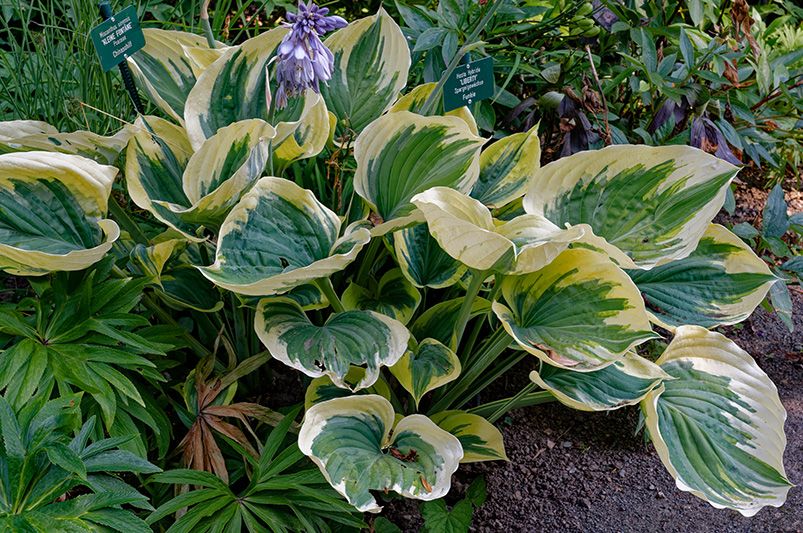
Liberty Hosta
The Liberty Hosta is a striking and award-winning variety prized for its bold variegation and strong garden presence. Its large, heart-shaped blue-green leaves are beautifully edged with wide, creamy yellow margins that brighten to white as the season progresses, creating a dramatic contrast. With its upright, vase-like growth habit, the Liberty Hosta brings structure and elegance to shaded borders, woodland gardens, and foundation plantings. In summer, tall stems of lavender flowers appear, adding a delicate touch and attracting pollinators. Easy to grow and highly resistant to pests, the Liberty Hosta is a standout choice for gardeners seeking a low-maintenance yet visually impactful plant.
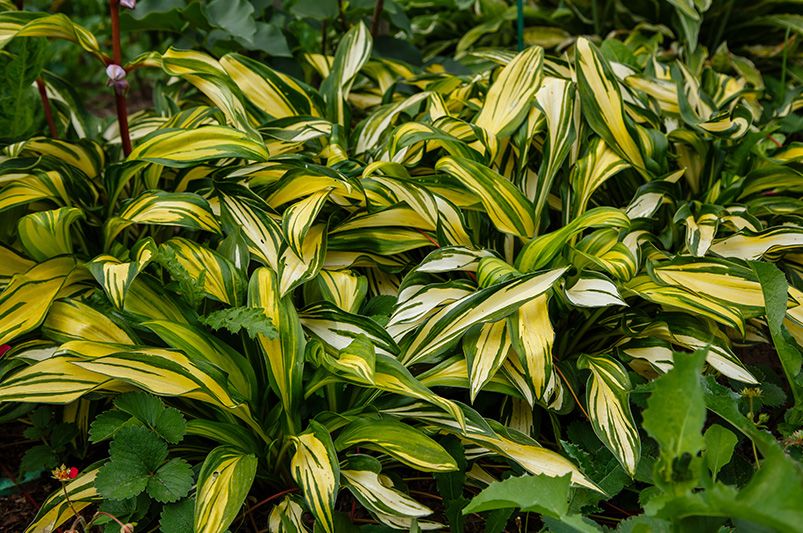
Rainbow’s End Hosta
The Rainbow’s End Hosta is a dazzling, compact variety known for its vibrant, multi-toned foliage and unique visual appeal. Its thick, shiny leaves showcase a striking combination of bright yellow centers with dark green, irregular margins, creating a bold, almost glowing effect in shaded garden spaces. As the season progresses, the yellow intensifies, enhancing its dramatic color contrast. In late summer, deep purple flower stalks rise above the foliage, adding another layer of interest and attracting pollinators. Perfect for borders, containers, or accent plantings, the Rainbow’s End Hosta brings a splash of color and charm to any shady spot.
Looking for even more beautiful options? Explore our full ShrubHub Hosta Collection to find the perfect fit for your shade garden project.


